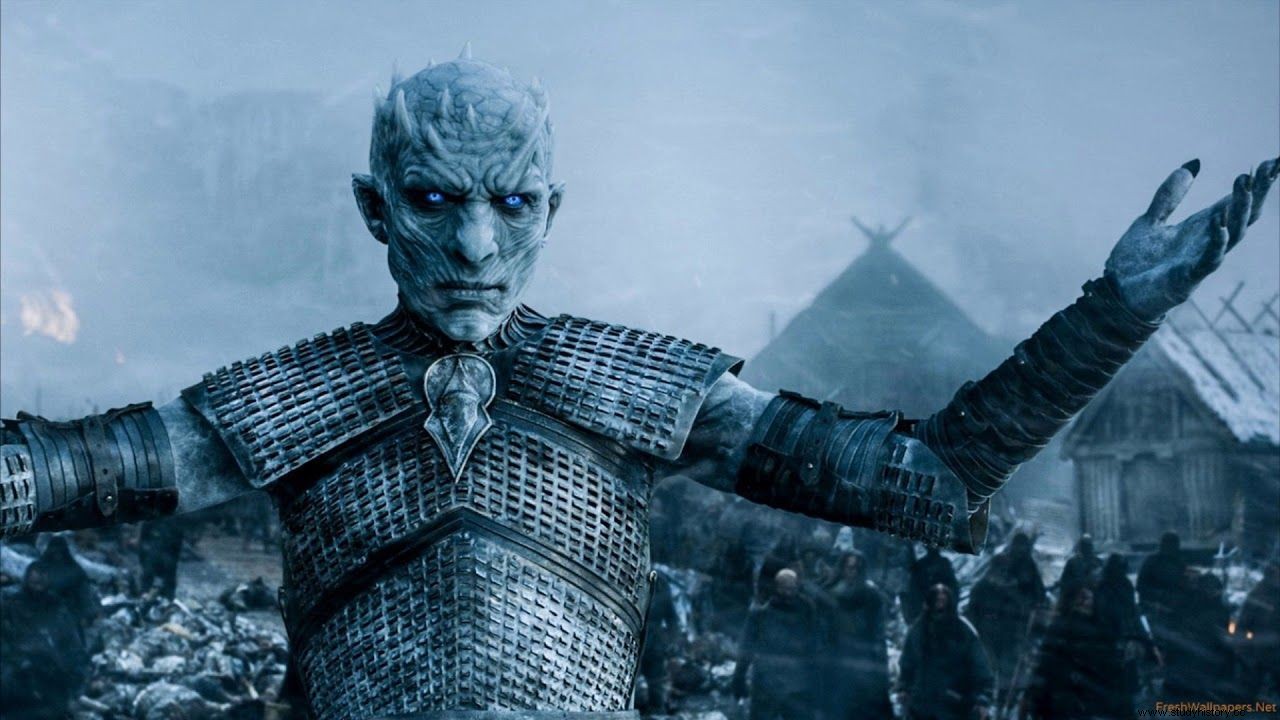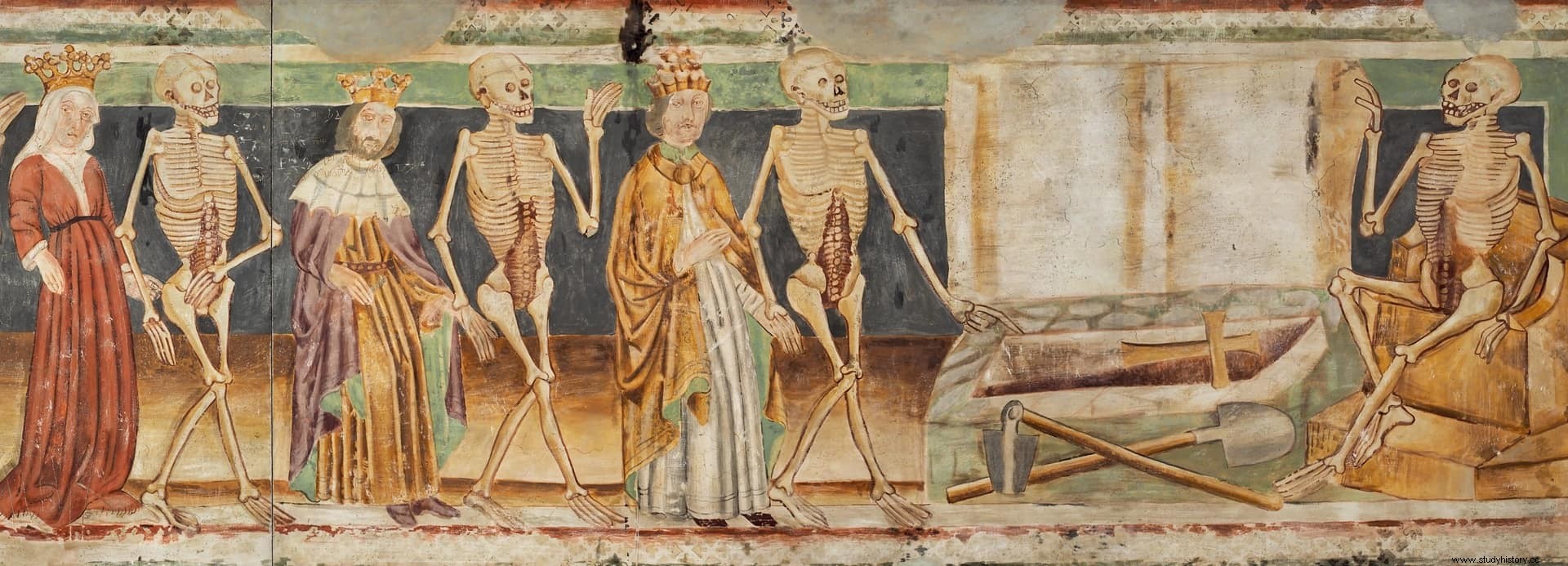
The white walkers and his hosts of undead occupy almost as important a part in the series of Game of Thrones and in the saga of A Song of Ice and Fire like the intrigues and conspiracies exercised by antagonistic kingdoms and families. However, as Stannis conveys to Samwell Tarly in A Storm of Blades , the Others represent “The old enemy. The only enemy that really matters”. Thus, although in some kingdoms the characters remain oblivious to the events that occurred Beyond the Wall, both the reader and the fan of the series have been able to evaluate the dimensions reached by this threat that advances inexorably towards the kingdoms of men.
The white walkers in Game of Thrones (contains spoilers)
In the previous season, the Others and their army of wraiths played a significant role in the plot and allowed us to find out much more about this dark enemy, although readers of the The books already gave fans of the series an edge in having been able to read the detailed descriptions of the Fist of the First Men battle and its subsequent retreat. In addition to other chapters or episodes. There is no doubt that it will be in the eighth season where the cost to pay for facing the Others and their army of the dead will be known.
As Carolyne Larrington, Prof. at St. John's College, Oxford University, tells us in her book Winter is coming. The medieval world in Game of thrones, A Song of Ice and Fire, and thus the Game of Thrones series, is full of references and elements taken from history. Families, places and events are in some cases clearly influenced by the medieval European past. Thus, the idea of our army of the dead is also rooted in history. While white walkers appear to be a fantastic invention of George R.R. Martin, the corpses they sorcery bring back to life and make up their army bear an undeniable resemblance to the zombies of horror movies. Both are purely fantastic elements and different from each other, but which, as a whole, group together a series of characteristics that allow us to also relate them to certain elements of medieval ideology.
The white walkers are a forgotten legend in the world of Westeros, just a tale to scare children. However, we have been able to verify with the progression of the plot how wrong that belief is. In the ancient legends about the Age of Heroes that the character of Old Nanny relates to Bran, the Others or white walkers are malevolent characters who during the Long Night rushed over humanity and easily defeated men, raising the dead. to face them against the living and without showing any mercy towards women and children. Finally, the Others would be defeated in the Battle of the Dawn by an alliance of men and Children of the Forest led by a hero named Azor Ahai, wielder of a magical sword known as Lightbringer. To prevent such a threat from ever looming over humanity again, the Night's Watch was formed and the Wall would be raised with ice and spells.
The descriptions of the white walkers found in the books closely match those depicted in the series. The Others bring the cold with them and prefer to act at night. They are tall, emaciated and very pale creatures, which give the sensation of being composed of a matter similar to ice. His movements are graceful and his voice resembles that of cracking ice. One of its most striking features is the sinister glow of its eyes, like two intense blue stars. The motivations that drive the Others are practically unknown. It is not known if they appear as a result of a harsh winter or if they bring it with them. According to the stories, the white walkers "hate all creatures with warm blood in their veins" and feed their specters with the flesh of human children, this being something that may seem like a mere resource to scare children but that we have been able to corroborate in the last season. The wraiths in turn are reanimated by the Others through necromancy and blindly obey their orders, thus forming the bulk of the army of the dead. Their appearance is that of corpses of variable appearance, depending on the state in which they were found when they were raised. His eyes, like those of the Others, are an intense and unnatural blue. In addition, it seems that they are able to retain memories of their past life, having an example of this in the episode where one of the specters, a former member of the Night's Watch, is able to find the Lord Commander Jeor Mormont's quarters and try to kill him.
Both in the series and in the books, certain methods have been revealed that can be used to defeat the Others and the army of the dead. In the case of the white walkers, the dragonglass (name given to obsidian) is the material with which to make the weapons capable of defeating them. Also, Valyrian steel, forged with magical properties, seems to be another of its weaknesses. On the other hand, wraiths can be destroyed by fire, to which they are extremely vulnerable. In the novels it is unknown if these can also be destroyed with Valyrian steel and dragonglass, but in the series it has been proven that they can when Jon Snow and his companions fight in Hard House and Beyond the Wall against the army of the dead. . Likewise, the people of the Free People, the savages, have the custom of cremating their dead to prevent them from being revived by the Others. It appears, therefore, that it is fire, in essence, that can destroy the Others and their army. It is striking that it is precisely the antithesis of these, who seem to be composed of ice and wield frozen swords, their greatest weakness.
Different historical interpretations
We can find various references in medieval ideology with which to establish similarities and that perhaps served Martin as a source of inspiration to create the Others. In the Late Middle Ages and the Renaissance we find the artistic genre known as “Danza Macabre” , which had a presence in practically all of Europe. This genre is characterized by the representation of skeletons or decomposed corpses that, animated, try to reflect an image of death, in some cases as an inverted reflection of the world of the living. These gloomy characters are often depicted dancing or accompanying representative figures of medieval society such as nobles, peasants or bishops in a clear allusion to the fact that death reaches everyone. This theme was quite prolific in art and the representations are impressive in showing emaciated corpses that retain scant hair, teeth and are even being devoured by worms. However, it is not a representation of evil itself, but rather the idea that everything mundane inevitably comes to an end. That death triumphs over everything without distinction. Carolyne Larrington in her book Winter is Coming:The Medieval World in Game of Thrones she posits that the Others are a metaphysical representation of death and war, something that only brings destruction and is repeated cyclically. From this point of view, it is probably related to the medieval Danse Macabre and all the ideology that surrounds it.

On the other hand, the mythology and Scandinavian sagas They house some sinister characters from beyond the grave called draugar . Usually the draugar in their most peaceful version they are undead that dwell in the mounds where they were buried, protecting them from looters. These draugar They are easy to defeat, being able to be decapitated and placing their heads between their feet to prevent them from getting up again. On the other hand, we find in some sagas another type of draugr , which leaves the burial mound to prowl at night, becoming a danger to the neighbors. Apparently, the draugr they are corpses that take on a pale or bluish hue that evokes death. Sometimes they are shown incorrupt, although they increase their size and weight when feeding on their victims, acquiring an unnatural strength. Likewise, some draugar they are possessors of magical qualities such as controlling the weather, changing their shape, and seeing the future. However, what really makes the draugar dangerous is it is their envy towards the living for being able to enjoy everything that is deprived of them after death. This materializes in an insatiable hunger that leads to the draugr to devour when it is within reach, whether animals or people. The draugar in their most powerful variants they can be destroyed, albeit with difficulty and even with complex ritualization. The hero must reduce the draugr with bare hands, as it cannot be harmed by common weapons. He requires a magical weapon, such as one found in the draugr's own burial mound. , to behead him. After this, he must be cremated and his ashes buried or thrown into the sea to make sure that he is really dead.
There is no doubt about the similarity that the great enemy of Game of Thrones, considered as a whole, bears with the draugar . Both white walkers and wraiths have a ghastly appearance and supernatural qualities. In addition to this, it is hinted that the former can manipulate the weather, bringing with them the cold and snow, just as they act at night. At their most benign, the Others remain in the Lands of Endless Winter, north of Westeros. However, as the draugar , it is their hatred or envy that causes their hostility and that they are launched on the kingdoms of men, although the only purpose of the white walkers seems to be annihilation and not to satisfy an irrepressible appetite, or at least it is what we know by now. Finally, the fact that only certain weapons, and especially the element of fire, can combat the Others and their army is directly related to magical weapons and the need to burn the draugr to ensure its destruction.
It is likely that Martin drew on these sinister creatures, adding ingredients of his own, to create his white walkers and army. Even so, both for readers of the books and fans of the series, there are many gaps that remain to be filled in order to better understand these beings. It is likely that in the last season, released this April, we will find answers and discover many more things about these terrifying creatures. We will be able to verify if the history and the legendary prophecies of Westeros are fulfilled again or, on the contrary, we are witnessing the fall of the kingdoms of men.
